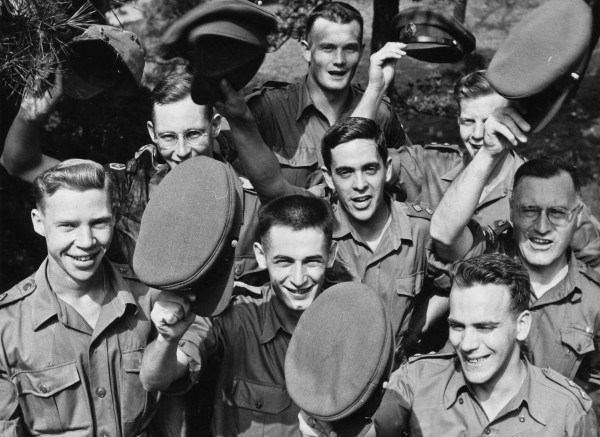The truce that ended the Korean War barely held together in the days after the armistice was signed, as the Allies and Communists accused each other several times of breaching the agreement.
If the truce hadn’t held after July 27, 1953, the deaths of three Moose Jaw-area men would likely have been in vain.
Pvt. Robert Martin Stenseth was born on Feb. 11, 1932, in Avonlea to Marin and Signe Stenseth of Stockholm, while he had four brothers and seven sisters.
Stenseth described himself as a farmer but actually worked — briefly — as a mechanic in Regina before enlisting there on Aug. 16, 1950. He was assigned to the Princess Patricia’s Canadian Light Infantry (PPCLI) and made his way to South Korea.
The 20-year-old was killed in action on June 21, 1952, and was buried in the United Nations Cemetery at Busan, South Korea.
An article in a Saskatchewan newspaper said a memorial service was held for Stenseth on June 29 at the Stockholm United Church, with Rev. A. Chandler officiating.
Pvt. Thomas Henry Thoveson was born on Aug. 8, 1929, in Rouleau to Theodor and Helga Thoveson of Nut Mountain, Sask., while he had one brother and eight sisters.
Thoveson enlisted in Regina on Feb. 16, 1951, and was assigned to the PPCLI. He was later killed in action on Oct. 4, 1952, and was buried in the United Nations Cemetery at Busan, South Korea.
In a newspaper article from Oct. 7, the army produced its 140th casualty list and reported that eight men had died in action, seven were wounded and one was injured. This brought to 1,069 total casualties that Canadian troops had suffered during the Korean War. At that point, 196 were dead, 789 were wounded, 73 were injured, 10 were missing and one was a prisoner of war.
Pvt. Lorne Dale Wiggins from Manor, Sask., was also killed on the same day as Thoveson, 23.
Lance Cpl. René Michaud was born on June 13, 1927, in Gravelbourg to Louis Philip and Delia of South Makwa, Sask., while he had five brothers and six sisters. He enlisted in Vancouver, British Columbia, on Nov. 20, 1951, and joined the PPCLI.
It was on June 24, 1953 — nearly a month before the truce was declared — when Michaud, 26, was killed. He, too, was buried in Busan, South Korea, where 376 other Canadians are also buried.
Two separate newspaper articles from Saskatchewan confirmed the soldier’s death.
Times-Herald articles
The Moose Jaw Times-Herald featured several articles about the truce in its July 27, 1953 issue, with headlines including “Firing stops along Korea battlefront,” “Nervous truce halts firing as ominous warnings sound,” “Diplomats tackle battle for Korea” and “‘Deep satisfaction’ in Canada over armistice.”
“The front, usually aflame at this time of night (10 p.m. Korean time), just grew dark. Men heaved sighs of relief, but with great caution … ,” an article said.
“Elsewhere on the 150-mile front, an anxious silence, shattered only by sporadic shelling or machine gun bursts, fell over the bunkers and trenches, where troops awaited the ceasefire,” the article continued.
“The diplomats … (will soon) take over in an attempt to bring lasting peace to this war-torn land,” the clipping added.
Another article said Canadian prime minister Louis St. Laurent received the truce news “with deep satisfaction,” noting Canada would “not forget the sacrifices which they (soldiers, sailors and airmen) have made, nor will we forget those losses which are the losses of the whole nation.”
Troops began pulling back during the next few days, with both sides exchanging prisoners — nearly 13,000 were Allies and roughly 74,000 were Communists.
On July 30 and 31, 1953, both parties accused each other of violating the truce since Communist planes were seen flying from Manchuria into North Korea and Allied aircraft were spotted flying reconnaissance missions over the demilitarized zone (DMZ).
Luckily, the situation settled down and the armistice held — and has held for the last 70 years.




